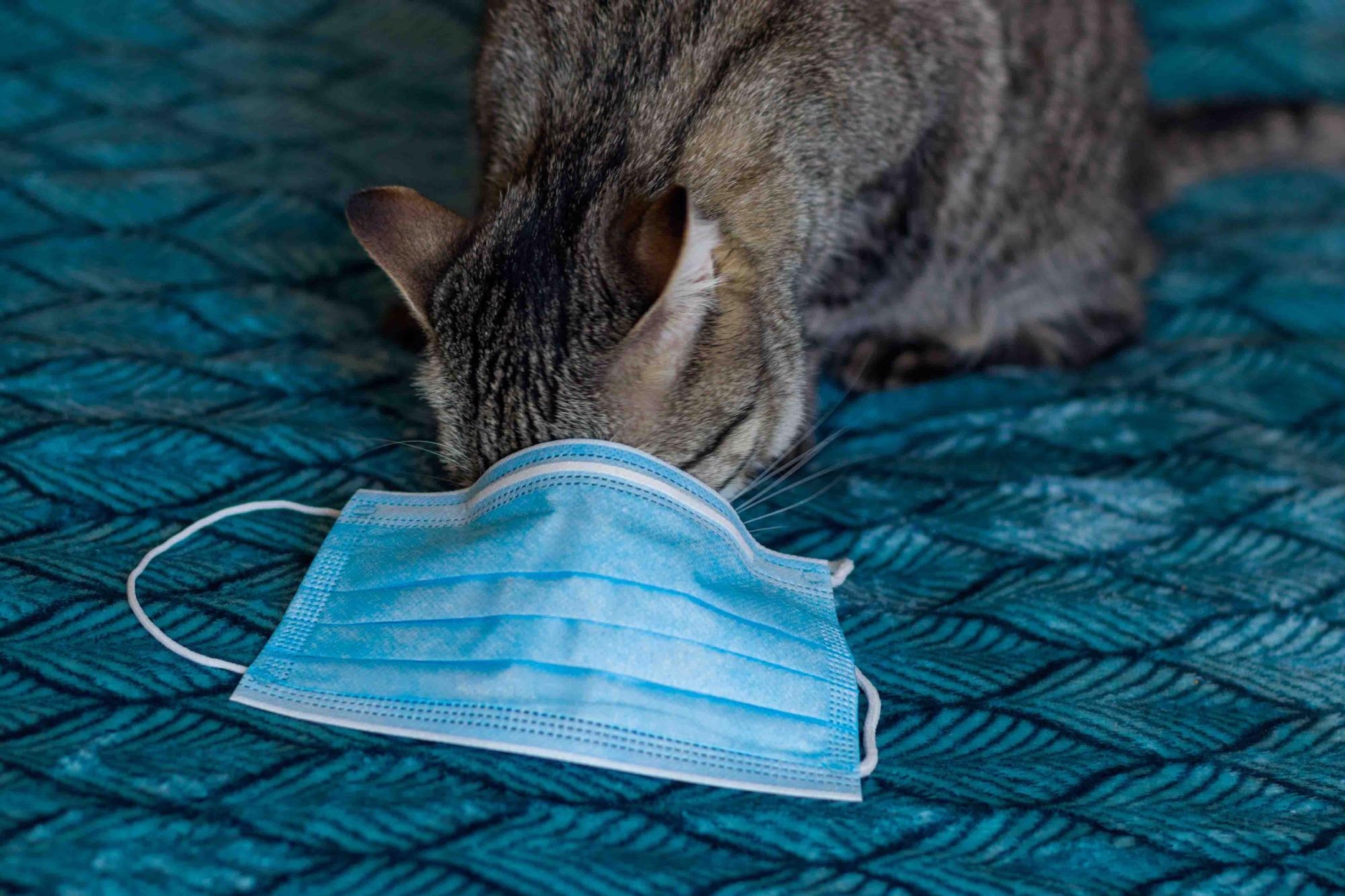Zoonotic origin of severe acute respiratory syndrome coronavirus 2 (SARS-CoV-2) predisposes to a probability of cross-infection pathways between humans and animals. Reports suggest a high susceptibility of domestic cats to SARS-CoV-2 infection and transmission.
Clinical signs of SARS-CoV-2 infection, high viral loads, and potential viral shedding have been detected in domestic cats. Although cats tend to transmit the infection to their species, the incidence of transmission of SARS-CoV-2 to humans from a feline source has not been reported yet. However, reports of spillover infections from minks, hamsters, and white-tailed deer hint toward the chances of onward transmission from animals, which is likely to result in newer variants.
 Study: Does having a cat in your house increase your risk of catching COVID-19? Image Credit: TanyaPhOtOgraf
Study: Does having a cat in your house increase your risk of catching COVID-19? Image Credit: TanyaPhOtOgraf
The study
A recent study published in the journal One Health assessed whether the presence of a domestic cat adds to the risk of SARS-CoV-2 infection among the household members after a human index case introduces the infection.
Veterinary Public Health (VPH) specialists took part in this seven-month-long online risk assessment study. The main pathways of the risk were drafted and segregated into smaller events.
Human-cat interactions were divided into two categories:
- Close contact – interactions between cats and humans occurring within the range of one meter, with fomites, droplets, and aerosols being the possible transmission pathways.
- Non-close contact – interactions between cats and humans occurring in more than one-meter range with fomite or airborne transmission pathways).
All participants conducted an independent assessment on the risk question and were asked the reason for their conclusion. This step was repeated; thereafter, the results were collectively reported.
Results
The possible risk of transmission of SARS-CoV-2 included – lifting the cat, scent-marking, and being in close contact with the cat, such as – cuddling, stroking, sharing a bed, and sitting on the same furniture. The possible human-to-cat transmission modes included eating from the owners’ crockery. While the risk factors for cat-to-human transmission were – stroking the cat after it grooms itself or letting the cat get onto the dining table.
Additionally, cleaning cat litter increased the chances of cat-to-human transmission of SARS-CoV-2 infection. The size and cleanliness of the living room and an individual’s personal hygiene were also associated with fomite transmission risk.
When transmission risk was assessed in human-to-human close contact interactions, it was found that the risk remained from high to very high, whereas in cases of non-close contact interactions, the transmission risk ranged from moderate to high.
The chances of infection of a non-infected individual in the household from the domestic cat ranged from very low to low in cases where both the members of the household come in close contact interactions with the cat; negligible to very low if either the infected person or the second member of the household maintains physical distance from the cat; and negligible when both the members physically distance themselves from the cat.
Discussion
The findings showed that the risk concerning secondary attack rate (SAR) during close contact of the household members with the cat remained very low for SARS-CoV-2 infection. On the other hand, non-close contact between the cat and the household members posed a ‘negligible’ risk for infection transmission.
Therefore, the risk of transmission of the viral infection from the cat was minor compared to the risk of human-to-human transmission of SARS-CoV-2 infection. In addition, isolating the infected member from the other members and the cat, maintaining proper hygiene, and following disinfection protocols aided in preventing fomite transmission. Hence, domestic cats should be kept under quarantine to avoid infection transmission from humans.
The intensity of contact between the cat and the household members determined the risk of transmission of SARS-CoV-2 infection—from the cat to an uninfected person (from negligible to very low). The risk of human-to-cat transmission of SARS-CoV-2 was higher compared to cat-to-human transmission.
In addition, the risk of aerosol-transmitted infection was far more in human-to-human contact compared to cat-to-human contact. However, respiratory droplets of cats, grooming of infected fur, or infected feces were identified as potential risks for immunologically compromised members.
The risk assessment was based on the SARS-CoV-2 infection transmission to the cat from an infected human. In such cases, the risk was estimated to be moderate in close contact interactions.
The risk of transmission of infection to a second person who is in close contact with the cat but maintains a distance from infected human members was found to be higher—the cat being the potential vector. Preventing close contact between infected humans and cats reduces the risk of transmission of SARS-CoV-2 considerably. Maintaining personal hygiene can further reduce the risk of fomite transmission.
Conclusion
The closeness of the cat-to-human interactions dictates the risk of infection of a second member in the household – the risk ranging from very low to negligible. Infection in domestic cats increases the risk of transmission of SARS-CoV-2. Maintaining personal hygiene and proper isolation can reduce the transmission risk considerably.